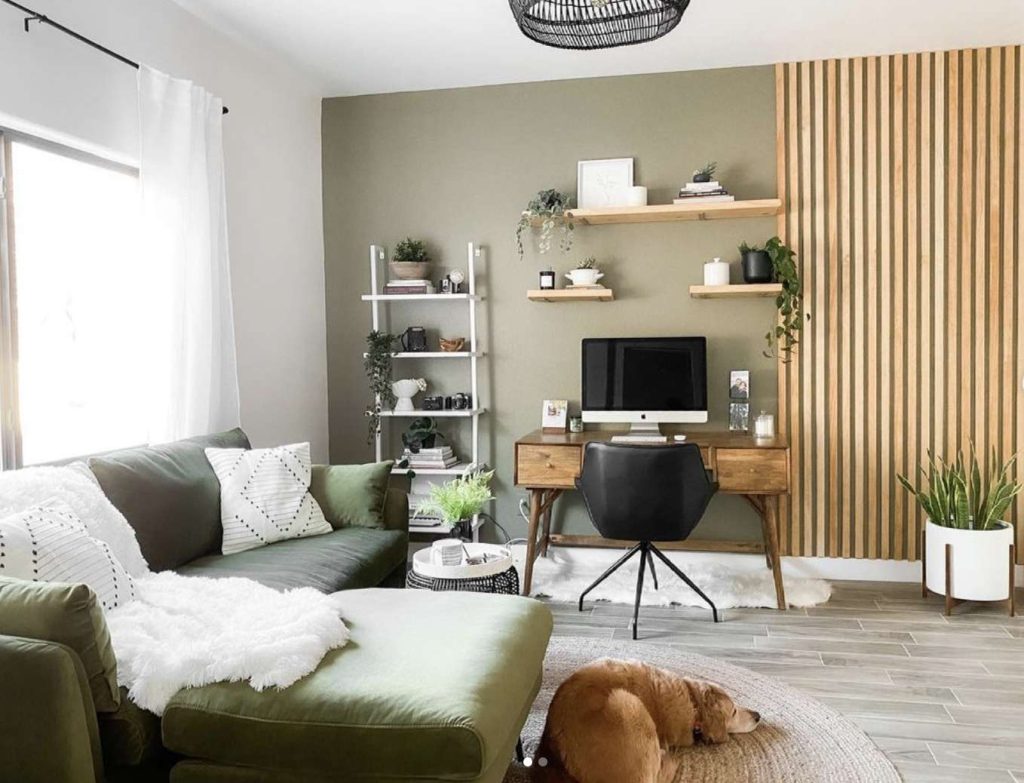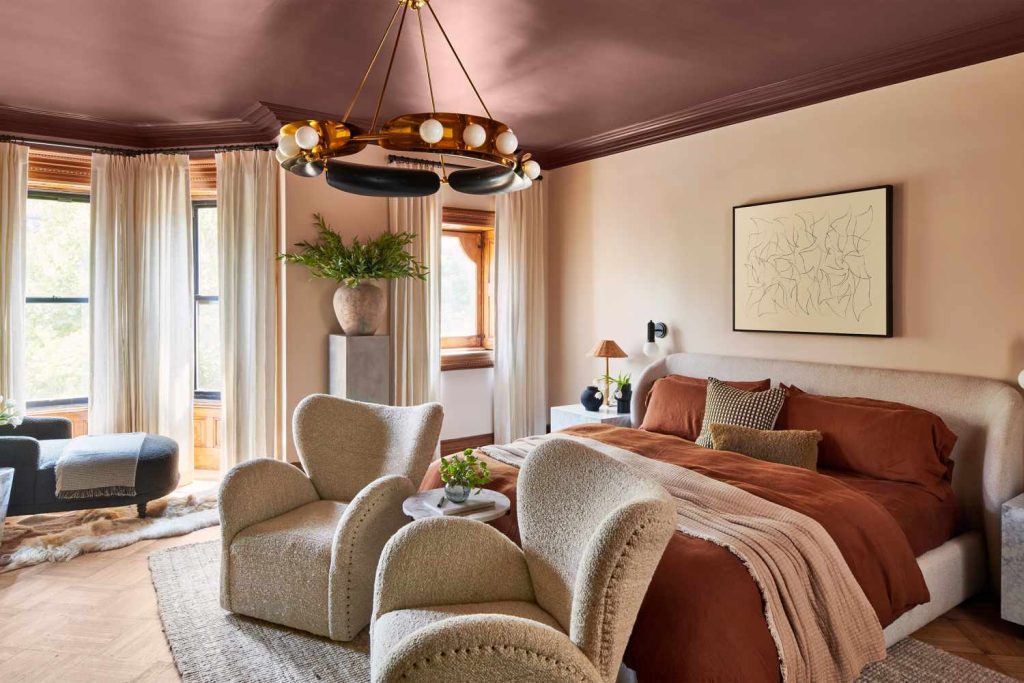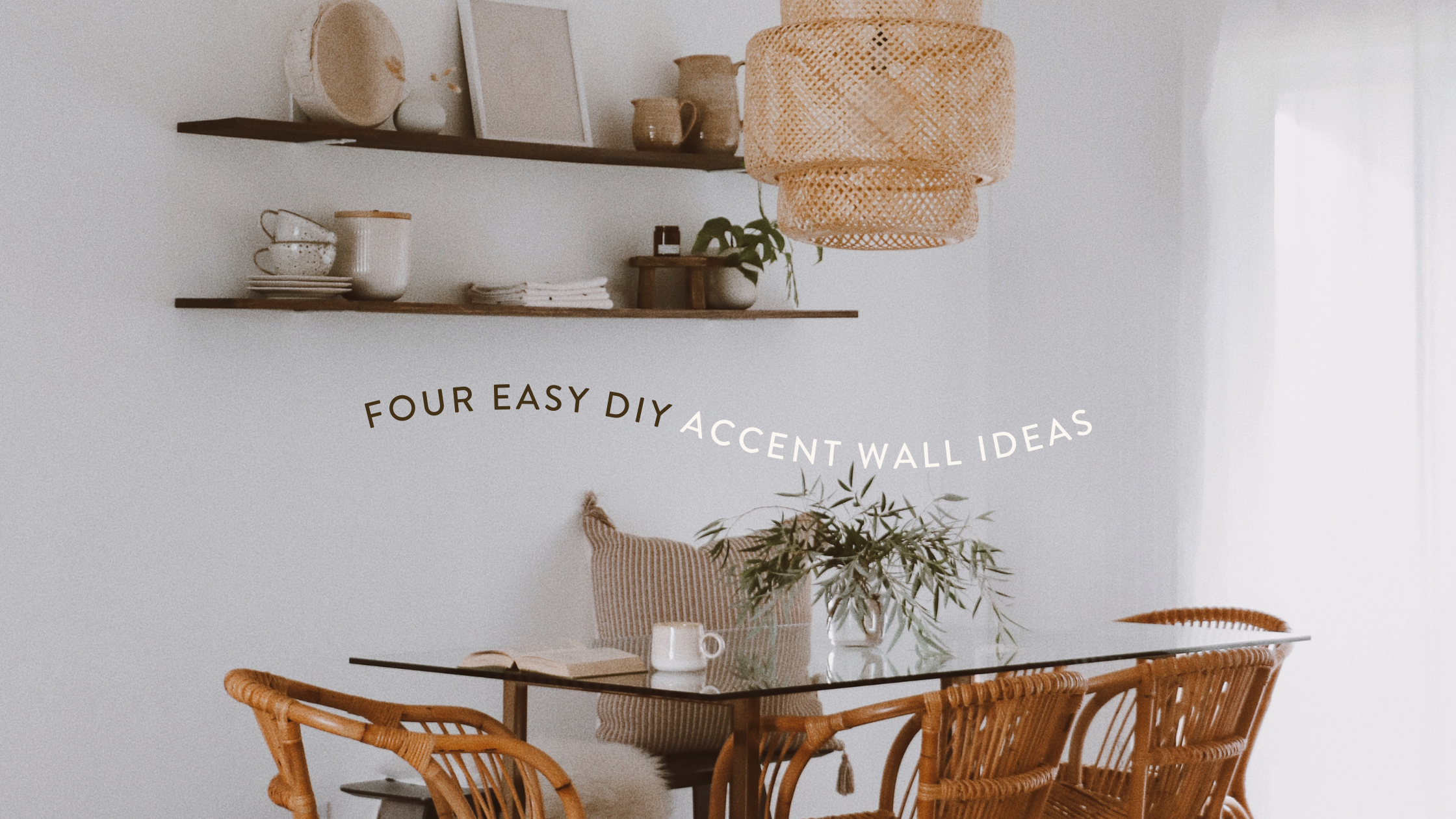Looking to transform a room without breaking the bank or committing to a full renovation? An accent wall might be exactly what you need. These eye-catching focal points can completely change the feel of a space in just a weekend, and the best part is that most of these projects require minimal tools and experience.
Whether you’re working with a tight budget or just love the satisfaction of a good DIY project, these 15 accent wall ideas will help you create a stunning feature that reflects your personal style.
What Makes a Great Accent Wall?
Before diving into specific techniques, it’s worth understanding what makes an accent wall successful. The best accent walls create visual interest without overwhelming the space. They should complement your existing decor while adding depth and personality to the room.
Choose the right wall carefully. Typically, the wall behind your bed, sofa, or dining table works best. Avoid walls with lots of windows or doors, as these can make the design look choppy and unfinished.
1. Classic Board and Batten
Board and batten wainscoting creates an elegant, traditional look that works in everything from farmhouse to modern homes. You’ll need some basic carpentry skills, but the materials are affordable and the impact is dramatic.
Start by measuring your wall and planning your board spacing. Cut your boards to size, then attach the horizontal “batten” boards first, followed by the vertical “board” pieces. Paint everything in a coordinating color for a cohesive finish.
2. Geometric Paint Design
Create a modern masterpiece using just painter’s tape and a few paint colors. Geometric patterns like triangles, hexagons, or overlapping circles can make a bold statement without requiring any special skills.
Plan your design on paper first, then use a level and measuring tape to mark your pattern on the wall. Apply painter’s tape carefully, paint your design, and remove the tape while the paint is still slightly wet for crisp lines.
3. Reclaimed Wood Planks
Nothing beats the warmth and texture of natural wood. Reclaimed wood planks can be installed horizontally, vertically, or in a herringbone pattern for different effects.
Sand your planks smooth and apply a protective finish before installation. Use a brad nailer to attach them directly to the wall studs, starting from one corner and working your way across. The slight variations in wood tone and texture will add character to your space.

4. Removable Wallpaper Feature
Peel-and-stick wallpaper has come a long way in recent years. Today’s options include everything from subtle textures to bold botanical prints, and they’re perfect for renters or anyone who likes to change their decor frequently.
Clean your wall thoroughly before application, and use a smoothing tool to eliminate air bubbles as you work. Start from the center and work outward for the most professional-looking results.
5. Textured Paint Techniques
Create depth and interest using special paint techniques like sponging, ragging, or combing. These methods add texture without the cost of materials like wood or stone.
Start with a base coat in your lighter color, then apply the second color using your chosen technique while the base is still slightly damp. Practice on a piece of cardboard first to perfect your technique.
6. Shiplap Installation
Shiplap brings farmhouse charm to any room and is surprisingly easy to install. You can buy pre-made shiplap boards or create the look using regular pine boards with a router.
Install horizontally, starting at the bottom and working your way up. Use a level to ensure each board is straight, and leave small gaps between boards for the characteristic shiplap look.
7. Stone Veneer Application
Create the look of expensive stonework with lightweight stone veneer panels. These products have become much more realistic and easier to install in recent years.
Clean and prime your wall first, then apply the panels according to manufacturer instructions. Most use construction adhesive and don’t require mortar, making them perfect for DIY installation.
8. Fabric Wall Covering
Upholstering a wall with fabric creates a soft, luxurious look that’s perfect for bedrooms or reading nooks. Choose a fabric that complements your existing decor and has enough body to hang well.
Stretch the fabric over batting attached to the wall, then secure with a staple gun around the edges. Add decorative trim to cover the staples for a finished look.
9. Gallery Wall Display
Transform a wall into a curated gallery space with a collection of artwork, photos, and decorative objects. This approach works especially well when you want to showcase personal items and memories.
Plan your layout on the floor first, then measure and mark placement on the wall. Use picture hanging strips for lightweight pieces to avoid putting holes in the wall.
10. Chalkboard or Whiteboard Paint
Functional accent walls serve double duty by providing both visual interest and practical utility. Chalkboard paint creates a surface for notes, artwork, or menu planning.
Apply primer specifically designed for chalkboard paint, then apply two thin coats of the paint itself. Allow to cure for several days before using, and season the surface by rubbing chalk all over it and erasing.
11. Rope or Jute Texture
Create a nautical or bohemian vibe by covering part of your wall with rope or jute. This technique works particularly well as a backdrop for coastal or rustic decor.
Apply construction adhesive to the wall in sections, then press the rope into place, coiling it tightly to avoid gaps. Work in manageable sections to ensure the adhesive doesn’t dry before you can position the rope.
12. Mirror Tile Installation
Mirrored tiles can make a small room feel larger while creating a glamorous focal point. They’re available in various sizes and styles, from classic squares to modern hexagons.
Mark your starting point and use tile spacers to ensure even gaps. Apply each tile with construction adhesive, checking frequently with a level to maintain straight lines.
13. Cork Board Feature
Cork tiles create a warm, natural texture that’s also functional for displaying photos, notes, or artwork. Choose from natural cork or painted options to match your decor.
Apply cork tiles with construction adhesive, starting from the center of your wall and working outward. Trim edges with a sharp utility knife for a clean finish.
14. Stenciled Patterns
Stencils allow you to create intricate patterns without artistic skills. Choose from traditional damask designs, modern geometric patterns, or even custom stencils made from your own designs.
Secure your stencil with painter’s tape and use a foam roller or stencil brush to apply paint. Remove excess paint from your brush before applying to avoid bleeding under the stencil.
15. Mixed Media Collage
Combine different materials like wood, metal, fabric, or paper to create a unique textural collage. This approach works well in creative spaces like home offices or craft rooms.
Plan your composition carefully, considering how different textures and colors will work together. Attach lightweight materials with construction adhesive and heavier pieces with appropriate fasteners for your wall type.

Planning Your Project
Before starting any accent wall project, take time to plan carefully. Consider the room’s lighting, existing furniture, and how the accent wall will work with your overall design scheme.
Measure twice and buy a little extra material to account for mistakes or future repairs. Most of these projects can be completed in a weekend, but don’t rush the process. Taking time to prep properly and work carefully will ensure professional-looking results.
Tips for Success
Start with a clean, smooth wall surface for the best results. Fill any holes, sand rough spots, and apply primer if you’re painting over dark colors or glossy surfaces.
Invest in quality tools. A good level, measuring tape, and appropriate fasteners will make your project easier and help ensure professional results.
Don’t be afraid to start small. If you’re nervous about committing to a large accent wall, try the technique on a smaller area first, like the space above a headboard or behind floating shelves.
Making It Your Own
The best accent walls reflect your personal style and the way you use your space. Don’t feel limited by trends or what you see in magazines. Consider how you live in the room and what would make you happiest to look at every day.
Remember that accent walls should enhance your space, not dominate it. The goal is to create a focal point that draws the eye and adds interest without overwhelming the room’s other elements.
With these 15 ideas as your starting point, you’re ready to create an accent wall that transforms your space and showcases your creativity. Most importantly, have fun with the process. The best DIY projects are the ones you enjoy creating as much as you love the finished result.
